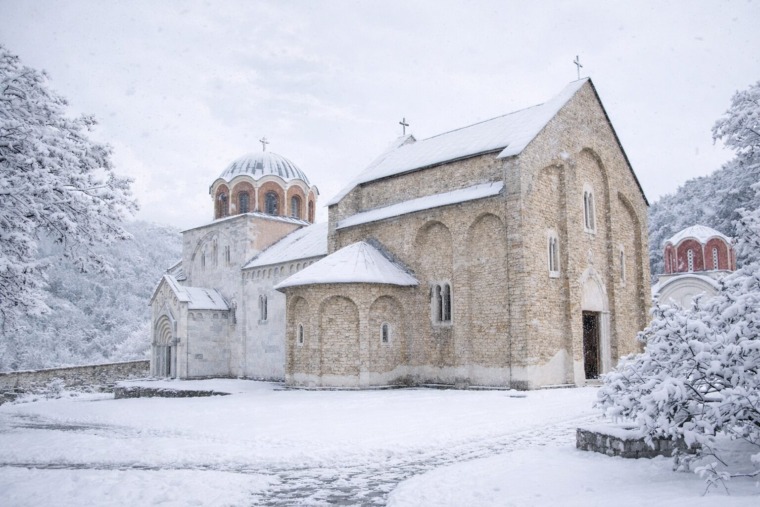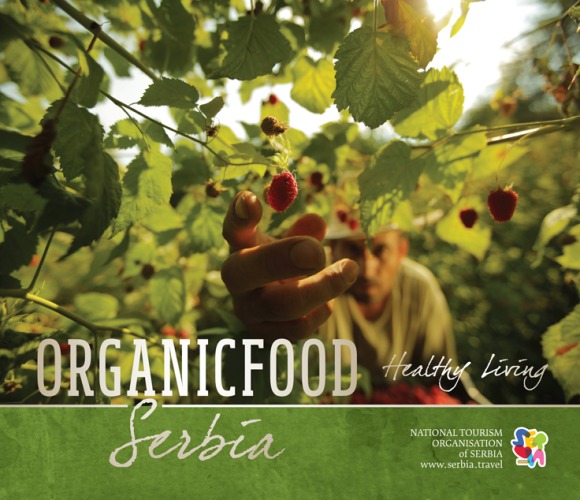

On the last part of our itinerary for travelling through the landscapes of Organic Serbia, far from the main roads and almost uninhabited, there are the mountains of southeast and east Serbia that preserve the entire worlds of autochthonous plants, woods, wild and farm animals. They give full meaning to the term “preserved biodiversity”.
 FOREST HARVEST & FRAGRANT WINES
FOREST HARVEST & FRAGRANT WINES
In the healthy forests and uninhabited high grounds of Kopaonik, Jastrebac, Goč, Željine… the Marni company with headquarters in Kruševac has for almost three decades been harvesting the fruits of the forest. Applying modern technology, Marni has sourced penny buns, black morels, golden chanterelles and other mushrooms to create different variations of organic products: mushrooms in oil, dried mushrooms, fresh and frozen mushrooms.
In the vicinity of Kruševac, on the banks of the Zapadna Morava River, there is one of the most famous Serbian vineyards – Župa Aleksandrovačka. The list of recommendations for travellers visiting these regions is a collection on the history of wine kept in the Museum of Wine in Aleksandrovac, and also to be recommended is for you to try Župa wines, particularly the odorous “Tamjanika” wine.
DIVERSITY OF LIFE
Far from the main roads, the mountains of southeast and east Serbia preserve the entire worlds of autochthonous plants, woods, wild and farm animals. They give full meaning to the term “preserved biodiversity”. Species of plants growing in Stara Planina are so diverse that they make up more than a third of the total flora of Serbia. The wondrous mountain of Rtanj, whose shape makes am almost perfect pyramid, is mentioned in many folk tales attributed to the healing powers to herbs growing there. And Suva Planina is also a rich treasury of the flora. The Radan mountain has many pastures and forests and even boasts a remaining rainforest, a legacy from the Ice Age. Our itinerary for travelling through the landscapes of Organic Serbia also features villages at the foot of Stara Planina, near Dimitrovgrad, where rare species of farm animals are still kept.
BUŠA HERDS & SHEEP OF BALKAN NOMADS
A long time ago, the Balkan pastures were covered in herds of Buša (Bos europeus primigenius) – a relatively small breed of cattle, with short horns, black muzzle and a white ring of hairs, much like a doe. They have completely adapted to the high grazing grounds and harsh climate, are resistant to diseases and very fertile. One of the largest herds of today (as they are nearly extinct) is nowadays kept by Milutin Nikolić – cattle grower from the village of Gornji Krivodol. His herd is made up of more than two hundred heads of Buša. Each year on 7 July, celebrated as Ivanjdan, day of St John the Forerunner, when the herbs are at their most powerful according to the folklore, he takes his herd, in a symbolic move, to the succulent mountain pastures of Mučibaba to graze.
In the village of Kamenica on Stara Planina Mountain, today there is a unique herd of Karakachan sheep, guarded by Jovanka Stevanović-Ivanov. Karakachan sheep is the breed developed during several centuries of selection carried out by the nomad Karakachan tribes who took their herds to the Western Balkans pastures in the summers, and spent their winters in Greece. Until recently it was believed that this breed was not present any more in our region. Fortunately, this is not the case. Thanks to the devotion and enthusiasm of several nature lovers, these resistant and long-living sheep of black and brown fleece, which are known for their gentle and motherly instinct, are not extinct.

FRUIT OF TOPLICA AREA
The south of Serbia is well known for its mineral and thermal waters, and a large area in this part of Serbia is called Toplica, its name alluding to warm waters. The main centre of this region, called Toplički after Toplica, is the town of Kuršumlija, well known for its fruit growing consisting mostly of plums, but apples and pears can also be found. Dutch company Midi Organic gathered a large number of families from this area into an association of organic farmers. Here nature itself has been more than generous: in the vicinity of Kuršumlija only, there are as many as three spas with curative waters: Prolom, Lukovska and Kuršumlijska, and there is also Radan, a stunning mountain. Stepping out from our thematic journey, on the tourist road sign, there are wonderful clay figures of the Devil’s Town (Djavolja Varoš), a remarkable archaeological site the Empress’ City and the prehistoric site Ploče.
Text: Milena Mihaljčić
Photo: Dragan Vildović
Related Articles


From Fireworks to Family Dinners: New Year’s Eve Across Serbia
December 31, 2025
Kuršumlijska Banja: Serbia’s Quiet Winter Spa Escape
December 30, 2025
Novak Đokovic Receives Special Globe Soccer Award in Dubai
December 29, 2025





